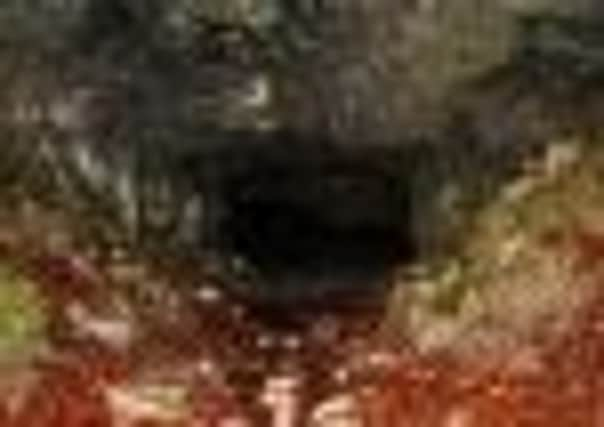Pots of gold await as underworld gets on the tourist trail


A twisting 100km labyrinth of deep caves dating back 600,000 years that many visitors to the national park have little or no idea exists beneath their walking boots.
But a new project has been launched to promote the ancient subterranean landscape of the Yorkshire Dales – considered to be one of the most important in the country – and pave the way for a major tourism boost for the area.
Advertisement
Hide AdAdvertisement
Hide AdThe Yorkshire Dales Millennium Trust (YDMT) is spearheading the scheme, which will include a number of new geo-diversity tourism trails established across the national park and Nidderdale Area of Outstanding Natural Beauty (AONB), as well as new youth groups with a focus on geology.
As part of the project, an exhibition marking the 175th anniversary of the discovery of Victoria Cave at Langcliffe, near Settle, is being set up by the trust and local archaeologist Tom Lord at the Museum of North Craven Life from July this year.
The cave was first excavated in 1837 after a local mill worker crawled in and discovered a treasure trove of ancient artefacts including coins and pieces of metal.
Large scale excavations followed in the 1870s giving rise to the present cavernous entrance.
Advertisement
Hide AdAdvertisement
Hide AdThe site is now considered to be of huge scientific and historic importance, detailing life in the Dales over the last 600,000 years.
Archaeologists believe among the cave’s former occupants were a pack of hyenas more than 140,000 years ago when the region enjoyed a sub-tropical climate, a group of brown bears some 50,000 years ago, and more recently the Brigantes tribe in pre-Roman times around 2,000 years ago.
Dave Tayler, deputy director at Yorkshire Dales Millennium Trust, said: “People are very aware about species and habitat but are less conscious of the rich diversity of what lies beneath them.
“It underpins everything really.
“Geo-diversity is absolutely critical and influences everything that happens.
Advertisement
Hide AdAdvertisement
Hide Ad“This is particularly the case in the Yorkshire Dales where we are blessed with a fantastic landscape which is a consequence of the incredible subterranean world beneath us.
“There are labyrinths of 100km which a lot of people won’t even know they are walking over when they are here.
“If we raise awareness of this landscape it could be a huge boost for the numbers of people coming to visit the Dales.
“There is so much here of national importance in terms of geo-tourism.
Advertisement
Hide AdAdvertisement
Hide Ad“We were delighted to hear that our funding applications for this exciting new geo-diversity project have been successful.
Thanks to the vital support from these organisations, our shared passion for the rich geology and archaeology of the Yorkshire Dales will be brought to the forefront for everyone to enjoy.”
The £45,000 project will take place over the next 18 months and is being funded through grants from a variety of sources, including LEADER, Yorkshire Dales National Park Authority’s Sustainable Development Fund, the Landfill Communities Fund, Hansons Greenhow Landscape and Biodiversity Enhancement Fund, and Nidderdale AONB Sustainable Development Fund.
Urgent practical works and further research at Victoria Cave will also be supported involving the Yorkshire Dales National Park Authority (YDNPA), caving club volunteers and universities.
Advertisement
Hide AdAdvertisement
Hide AdThe project will aim to involve local school pupils and encourage them to discover more of their environment and contribute to the project
Roger Bingham, the Yorkshire Dales National Park Authority’s member champion for conservation of cultural heritage, said: “The stolid, enduring and many faceted characteristics of Dales folk may be said to reflect the bedrocks of the landscape in which they have dwelt since the beginnings of humanity.
“Our intertwined geology and archaeology fully deserve their mutual celebration of the geo-diversity of our Yorkshire Dales.”
The Victoria Cave exhibition runs from July 3 to the end of October and will feature bones from the glacial periods as well as a host of Romano-British artefacts.
The exhibition will also focus on the geology of caves, the discovery and exploration of Victoria Cave and a social history of Settle throughout the 19th century.